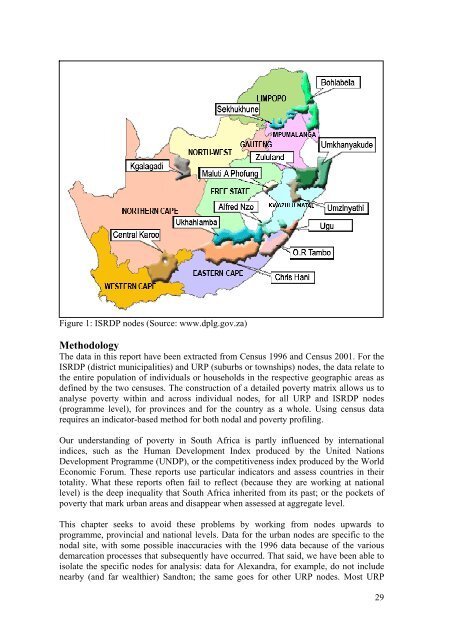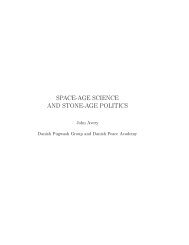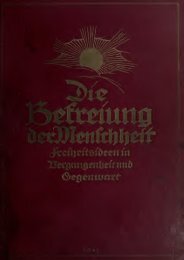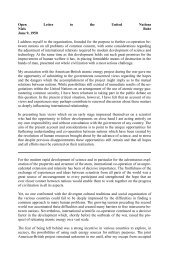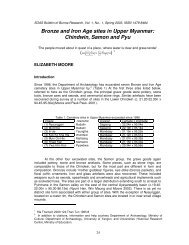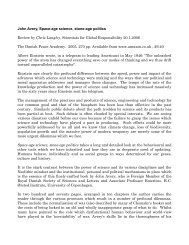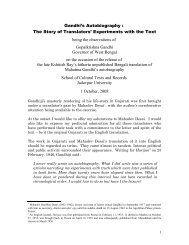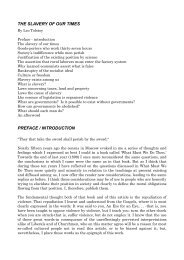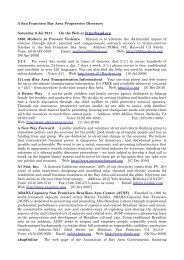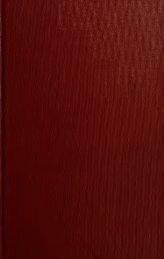History in the new South Africa: an introduction - Det danske ...
History in the new South Africa: an introduction - Det danske ...
History in the new South Africa: an introduction - Det danske ...
You also want an ePaper? Increase the reach of your titles
YUMPU automatically turns print PDFs into web optimized ePapers that Google loves.
Figure 1: ISRDP nodes (Source: www.dplg.gov.za)<br />
Methodology<br />
The data <strong>in</strong> this report have been extracted from Census 1996 <strong>an</strong>d Census 2001. For <strong>the</strong><br />
ISRDP (district municipalities) <strong>an</strong>d URP (suburbs or townships) nodes, <strong>the</strong> data relate to<br />
<strong>the</strong> entire population of <strong>in</strong>dividuals or households <strong>in</strong> <strong>the</strong> respective geographic areas as<br />
def<strong>in</strong>ed by <strong>the</strong> two censuses. The construction of a detailed poverty matrix allows us to<br />
<strong>an</strong>alyse poverty with<strong>in</strong> <strong>an</strong>d across <strong>in</strong>dividual nodes, for all URP <strong>an</strong>d ISRDP nodes<br />
(programme level), for prov<strong>in</strong>ces <strong>an</strong>d for <strong>the</strong> country as a whole. Us<strong>in</strong>g census data<br />
requires <strong>an</strong> <strong>in</strong>dicator-based method for both nodal <strong>an</strong>d poverty profil<strong>in</strong>g.<br />
Our underst<strong>an</strong>d<strong>in</strong>g of poverty <strong>in</strong> <strong>South</strong> <strong>Africa</strong> is partly <strong>in</strong>fluenced by <strong>in</strong>ternational<br />
<strong>in</strong>dices, such as <strong>the</strong> Hum<strong>an</strong> Development Index produced by <strong>the</strong> United Nations<br />
Development Programme (UNDP), or <strong>the</strong> competitiveness <strong>in</strong>dex produced by <strong>the</strong> World<br />
Economic Forum. These reports use particular <strong>in</strong>dicators <strong>an</strong>d assess countries <strong>in</strong> <strong>the</strong>ir<br />
totality. What <strong>the</strong>se reports often fail to reflect (because <strong>the</strong>y are work<strong>in</strong>g at national<br />
level) is <strong>the</strong> deep <strong>in</strong>equality that <strong>South</strong> <strong>Africa</strong> <strong>in</strong>herited from its past; or <strong>the</strong> pockets of<br />
poverty that mark urb<strong>an</strong> areas <strong>an</strong>d disappear when assessed at aggregate level.<br />
This chapter seeks to avoid <strong>the</strong>se problems by work<strong>in</strong>g from nodes upwards to<br />
programme, prov<strong>in</strong>cial <strong>an</strong>d national levels. Data for <strong>the</strong> urb<strong>an</strong> nodes are specific to <strong>the</strong><br />
nodal site, with some possible <strong>in</strong>accuracies with <strong>the</strong> 1996 data because of <strong>the</strong> various<br />
demarcation processes that subsequently have occurred. That said, we have been able to<br />
isolate <strong>the</strong> specific nodes for <strong>an</strong>alysis: data for Alex<strong>an</strong>dra, for example, do not <strong>in</strong>clude<br />
nearby (<strong>an</strong>d far wealthier) S<strong>an</strong>dton; <strong>the</strong> same goes for o<strong>the</strong>r URP nodes. Most URP<br />
29


